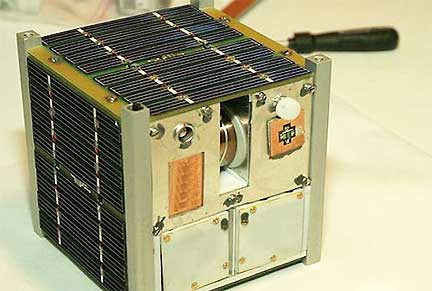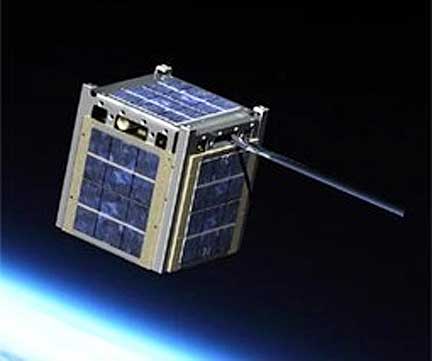 [SatNews] After three years of work by students and scientists from UC Berkeley and several higher education institutions around the world, a...
[SatNews] After three years of work by students and scientists from UC Berkeley and several higher education institutions around the world, a...
...miniature satellite is to be launched into space this month. The satellite was originally scheduled to be launched on Friday morning, strapped to a rocket along with 11 other miniature satellites built by other teams of scientists, but the launch has been postponed until August 14th due to equipment failure at Vandenberg Air Force Base near Lompoc, California. According to campus graduate student John Sample, who worked on the satellite, the countdown timer stopped at four minutes because a piece of ground equipment on the base had stopped working. As it will take a few days to repair the equipment, the launch was postponed.
 The satellite, called CINEMA—short for CubeSat for Ions, Neutrals, Electrons and MAgnetic fields—weighs eight pounds and measures 10 by 10 by 30cm. Its dimensions are roughly the size of an average loaf of bread, despite it being one of the most complex miniature satellites ever built, according to Sample. Campus graduate students and scientists from the campus Space Sciences Laboratory worked with students and scientists from Imperial College London, Korea’s Kyung Hee University, Inter American University of Puerto Rico and University of Puerto Rico, Mayaguez, on the project.
The satellite, called CINEMA—short for CubeSat for Ions, Neutrals, Electrons and MAgnetic fields—weighs eight pounds and measures 10 by 10 by 30cm. Its dimensions are roughly the size of an average loaf of bread, despite it being one of the most complex miniature satellites ever built, according to Sample. Campus graduate students and scientists from the campus Space Sciences Laboratory worked with students and scientists from Imperial College London, Korea’s Kyung Hee University, Inter American University of Puerto Rico and University of Puerto Rico, Mayaguez, on the project.
The Imperial College London built MAGIC, a magnetometer that measures the magnetic field in space. Once CINEMA is in space, a one-meter boom, or extension of the magnetometer, and two antennae for communication will extend from it. “MAGIC isn’t quite as sensitive as lots of other science quality magnetometers, but it does represent a remarkably high-quality measurement in a package that is smaller and uses less power than anything comparable before,” Sample said.
According to a campus press release, CINEMA also contains STEIN, a device made in the Lawrence Berkeley National Laboratory that contains particle detectors, and is equipped with electronics made by CEA Saclay in Paris that work to economize power and space. The particle detectors will provide the scientists with research on particle precipitation and on magnetic storms in space.
According to the Space Sciences Laboratory, CINEMA is denser than water, and therefore the densest satellite that the Space Sciences Laboratory has ever built. “By small satellite standards, CINEMA is one of the most complex ever built, but there are a lot of experienced people at Space Sciences Lab who build larger, more complex satellites, and they helped point us in the right direction,” Sample said.
Some of the scientists from the Space Science Laboratory who built CINEMA—including Sample, CINEMA principal investigator Robert Lin and physicist Thomas Immel—will have a chance to see their efforts become a reality when they operate the satellite post-launch. “It was a real honor to be part of such a dedicated and talented team, but I am really excited about operating CINEMA and getting back some good science results,” Sample said. “I think a lot of people have had doubts that you could do great science in such a small package, but I think we’re on that track.” (Source: The Daily California, by Sophie Mattson).

